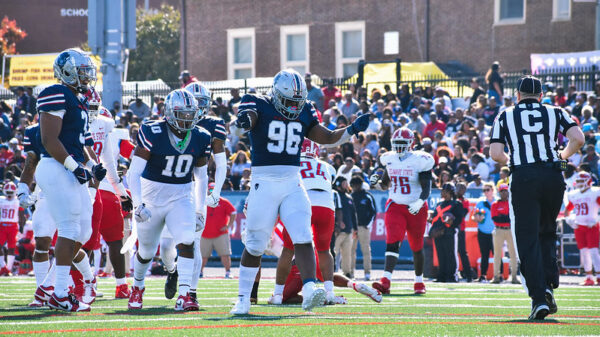A hundred years after the Harlem Renaissance, three Black women found themselves in Harlem, hanging up diplomas and entering the workforce. Every day they were walking past landmarks where Black musicians, artists, poets, and leaders congregated. In between working and interning, they were dreaming in the best place for Black people to dream.
As a fresh graduate from Howard University, Chandler Carter had it all figured out on paper –– but she wanted more.
“You’ve been in school your whole life, I finished it. I got a full-time job. I did that. I had the apartment. I had everything. So, you know, after graduation, I kind of just sat there and I looked at myself, and said ‘What do we do next?’… It was really hard for me to get into this groove of what is my purpose or where do I belong or where can I be placed,” Carter said.
Carter would eventually find her place with the help of other Black people in her same position, specifically Chris Reeder and Kelsey Beckford, who had just graduated from Spelman.
“You can do anything with a strong support system,” Carter said, “I think the power of connection is something that’s really, really important…. Everyone that’s gonna be important in your life, you’re probably only at most two or three people removed from.”
On one occasion, Reeder and Beckford went to see the art of another Howard graduate in the Brooklyn Museum. They were inspired by their work and ambition and spent the hour-long train ride back pouring into each other, sharing dreams of owning museums and having companies in their name.
“I love dreaming. It’s free and no one can take that away from you. They can’t. They try, but they can’t,” Reeder said.
Before they knew it, the trio was back together in Reeder’s apartment brainstorming and trying to expand on that moment on the train, this time with the added help of Beckford. The three wanted to create something together that would help serve each other. Constantly referencing the importance of “pouring into” or “watering” one another.
During this time, they would ideate a podcast, plan a mutual aid event and finally land on a media company. They would name the company StudioSixtyWest, after the apartment building where it all started. Now, the group of three has expanded to a group of seven, and they are eager to continue growing their team with other Black people who want to explore their passions outside of their 9 to 5.
“How can you use StudioSixtyWest to water yourself?… What do you want to do and what could contribute to your growth and your enjoyment?” Reeder questions when bringing in new team members.
Right now, StudioSixtyWest, or SixtyWest for short, has a website where one can find the latest on all things Black culture. Their goal is to create a space where Black people can tell their own stories. The group aims to be multifaceted in their storytelling and to paint a larger picture of what being Black in the “roaring 20’s” looked like in the 21st century.
“A little unofficial motto is when everybody says no, we say yes, we want it to be an outlet for people to just put all types of content out there,” Carter said.
“We need to take pictures… to create a cultural legacy, the generation that comes behind us needs to know like what were Black women wearing, what were they doing, what did they laugh about?” Reeder said, “In this next decade, I want to have the largest collection of archives dedicated to Black womanhood.”
Reeder cited that they were heavily influenced by the work of W.E.B DuBois, who made it a point to preserve Black stories in any way possible. In addition to their site, they have an Instagram page, @studiosixtywestfilm, dedicated to posting film photos taken by SixtyWest’s team.











